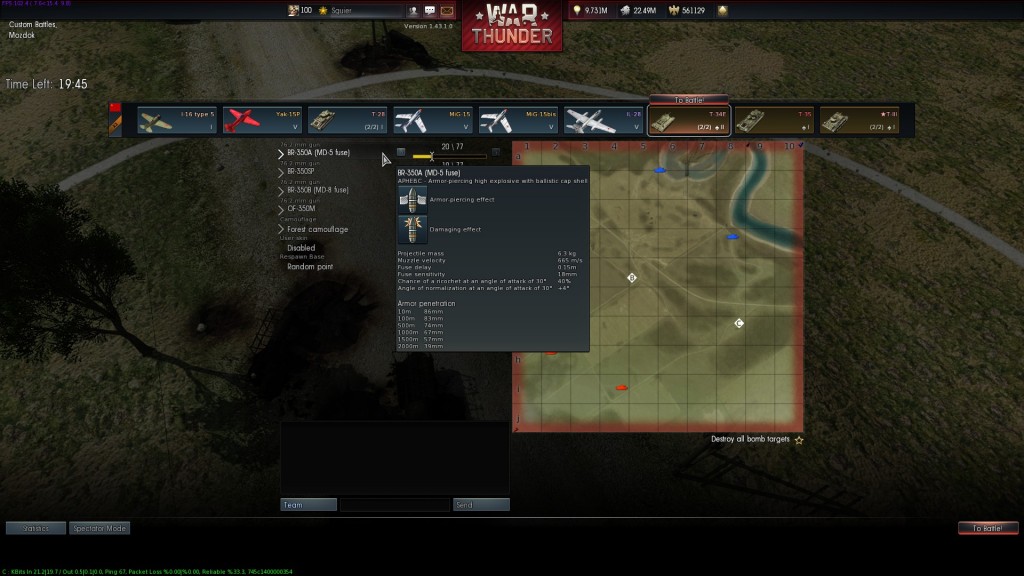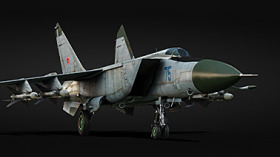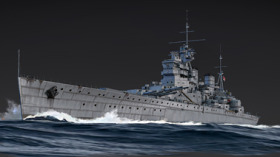
- For PC
- For MAC
- For Linux
- OS: Windows 10 (64 bit)
- Processor: Dual-Core 2.2 GHz
- Memory: 4GB
- Video Card: DirectX 11 level video card: AMD Radeon 77XX / NVIDIA GeForce GTX 660. The minimum supported resolution for the game is 720p.
- Network: Broadband Internet connection
- Hard Drive: 23.1 GB (Minimal client)
- OS: Windows 10/11 (64 bit)
- Processor: Intel Core i5 or Ryzen 5 3600 and better
- Memory: 16 GB and more
- Video Card: DirectX 11 level video card or higher and drivers: Nvidia GeForce 1060 and higher, Radeon RX 570 and higher
- Network: Broadband Internet connection
- Hard Drive: 75.9 GB (Full client)
- OS: Mac OS Big Sur 11.0 or newer
- Processor: Core i5, minimum 2.2GHz (Intel Xeon is not supported)
- Memory: 6 GB
- Video Card: Intel Iris Pro 5200 (Mac), or analog from AMD/Nvidia for Mac. Minimum supported resolution for the game is 720p with Metal support.
- Network: Broadband Internet connection
- Hard Drive: 22.1 GB (Minimal client)
- OS: Mac OS Big Sur 11.0 or newer
- Processor: Core i7 (Intel Xeon is not supported)
- Memory: 8 GB
- Video Card: Radeon Vega II or higher with Metal support.
- Network: Broadband Internet connection
- Hard Drive: 62.2 GB (Full client)
- OS: Most modern 64bit Linux distributions
- Processor: Dual-Core 2.4 GHz
- Memory: 4 GB
- Video Card: NVIDIA 660 with latest proprietary drivers (not older than 6 months) / similar AMD with latest proprietary drivers (not older than 6 months; the minimum supported resolution for the game is 720p) with Vulkan support.
- Network: Broadband Internet connection
- Hard Drive: 22.1 GB (Minimal client)
- OS: Ubuntu 20.04 64bit
- Processor: Intel Core i7
- Memory: 16 GB
- Video Card: NVIDIA 1060 with latest proprietary drivers (not older than 6 months) / similar AMD (Radeon RX 570) with latest proprietary drivers (not older than 6 months) with Vulkan support.
- Network: Broadband Internet connection
- Hard Drive: 62.2 GB (Full client)
In Update 1.43, tank shell icons have been significantly improved. Now they show the penetration value and damage effects, which are taken directly from the tank shell’s characteristics and reflect armour penetration, shell type and damage effects. Additionally, if you take a look at your ammo load in the future, you will be able to see which shells have maximum penetration capacity, which have maximum damage effects and whether they contain an explosive filler or are just a solid metal shot.
 We use four different grades to indicate armour piercing capacity depending on armour thickness:
We use four different grades to indicate armour piercing capacity depending on armour thickness:

Relative armour piercing capacity is calculated for 100 m of distance. For HE shells, penetration depends on the shell’s blasting power at the point of explosion - the further the armour is from the detonation point, the less likely a penetration will happen. This is why a tanker needs to get a feeling for whether the blasting power (HE effect) of his shell would be enough to penetrate the armour at that point.
To indicate a high explosive effect, we use three different icons representing different grades of blasting power. If your shell has an icon like the following it means that the shell contains an explosive filler: To indicate a kinetic effect, we use a different icons like in the following picture, which means that the shell has no explosive filler and that it damages the machine and the crew with secondary shards/pieces even with a direct hit. For solid shells the first variant of shards is used, and for APCR and HEAT - the second one which means less kinetic damage.
To indicate a kinetic effect, we use a different icons like in the following picture, which means that the shell has no explosive filler and that it damages the machine and the crew with secondary shards/pieces even with a direct hit. For solid shells the first variant of shards is used, and for APCR and HEAT - the second one which means less kinetic damage.

An example of a standard ammo load:
From left to right: Armor Piercing High Explosive (APHE): Has the least armor-piercing effect of all AP shells, but maximum damage-after-penetration effect, high-explosives shell has minimum armor-piercing effect of all the shells for given weapon and maximum damage effect; armor piercing composite rigid shell has maximum armor-piercing effect and low after-penetration effect, high explosive anti-tank has medium armor-piercing effect and low after-penetration effect.
Besides this we added more information to the shell’s info card for those who would like to better understand our game mechanics.
Now, as well as a type, mass, initial speed and armour piercing value table (this one now also shows HE shells) of the shell, the card contains additional information about a shell’s fuse and how it performs after hitting armour.
“Fuse delay” - a parameter which defines the distance the shell travels before the fuse completes its arming process. It is Important to understand how “deep” a shell can get inside the enemy tank before it will detonate.
“Fuse sensitivity” - a parameter which defines the thickness of armour that will prime the fuse, this will, in turn, start a countdown until detonation. It is Specified in mm of obstacle thickness, which means that if the shell hits the armour of that thickness and will penetrate it, then the shell will explode at the distance that is set by fuse delay from the penetration point. Thinner armor will not prime the fuse and the shell will continue to fly until it hits thicker armour or several thin obstacles with needed total thickness.
“Chance to ricochet” - chance for the shell to ricochet after impact with armour that is positioned at 30 degrees angle to the horizontal. It depends on the shell design, flatheaded shells have lesser chance to ricochet.
“Angle of normalization” - If a projectile hits a sloped piece of armour, it’s angle of impact will change by a particular amount of degrees, as the kinetic force affecting the projectile will move it to a more perpendicular state relative to the armour’s angle. A high angle of normalization will thus increase penetration against sloped armor.
Two last parameters are set up with the whole list of values (different impact angles cause different chances to ricochet and different normalization angles), data in the tooltip are given for the fast evaluation of how one shell is better than the other one.
New icons and shell tooltips are now displayed in all windows where you can interact with shells: in the battle, in the modifications window and in test drive.






